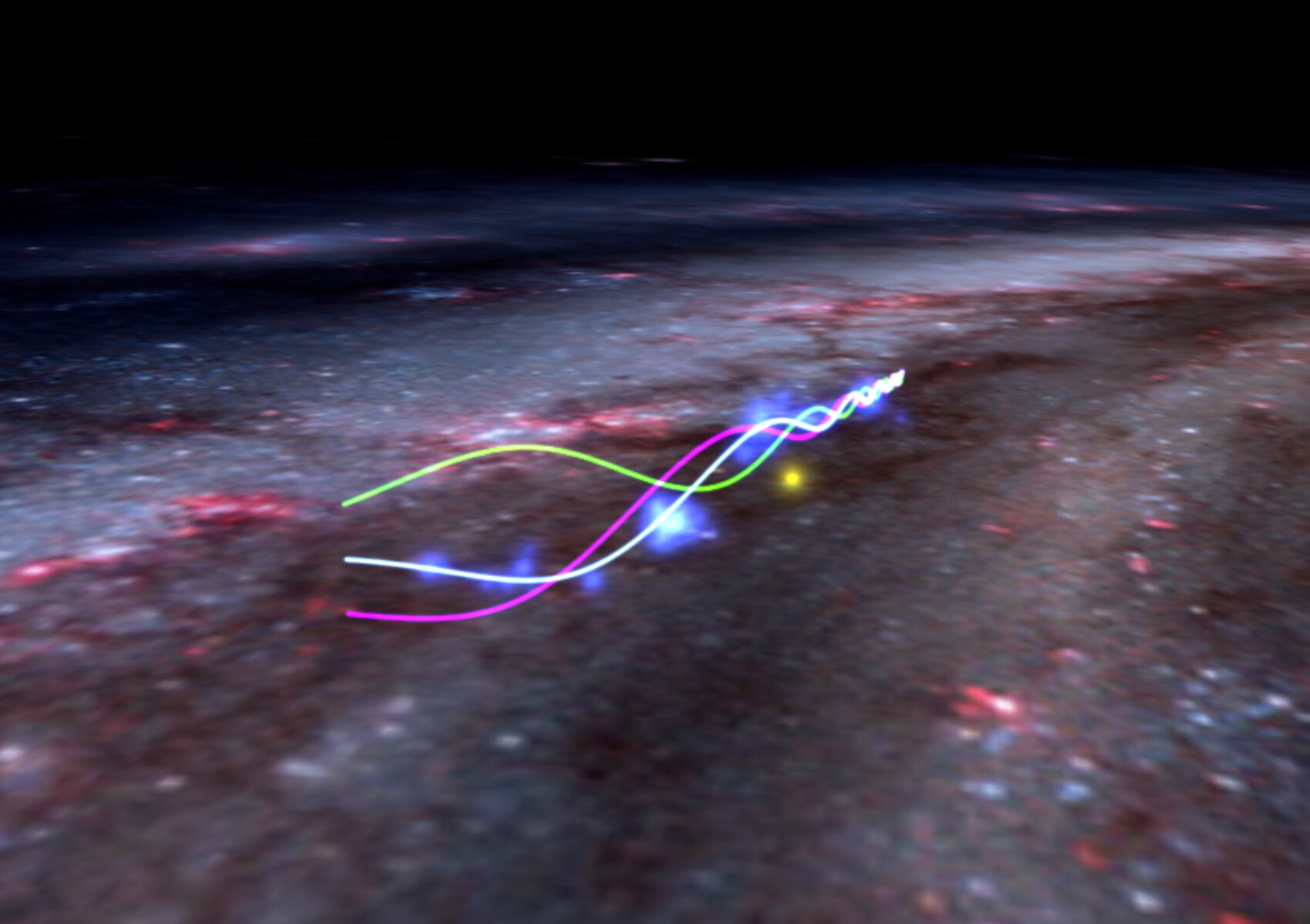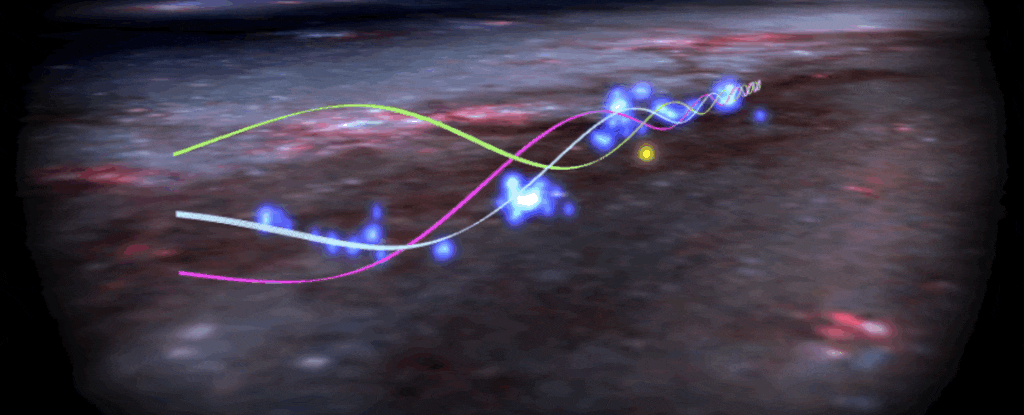
The Radcliffe Wave is a wave-shaped structure in the Milky Way galaxy that gives birth to clusters of stars along its spiral arm. It stretches across the night sky from Canis Major to Cygnus with Orion in between and is within 500 light years if you could spit it out into space. The Radcliffe Wave oscillates as a periodic traveling wave, which means that it rises far above the plane of the galaxy and then back down again. This kind of motion is known as a traveling wave, similar to sports fans doing the wave at a stadium game. Scientists have discovered this structure using data from Gaia spacecraft and are still studying its motion in greater detail.



